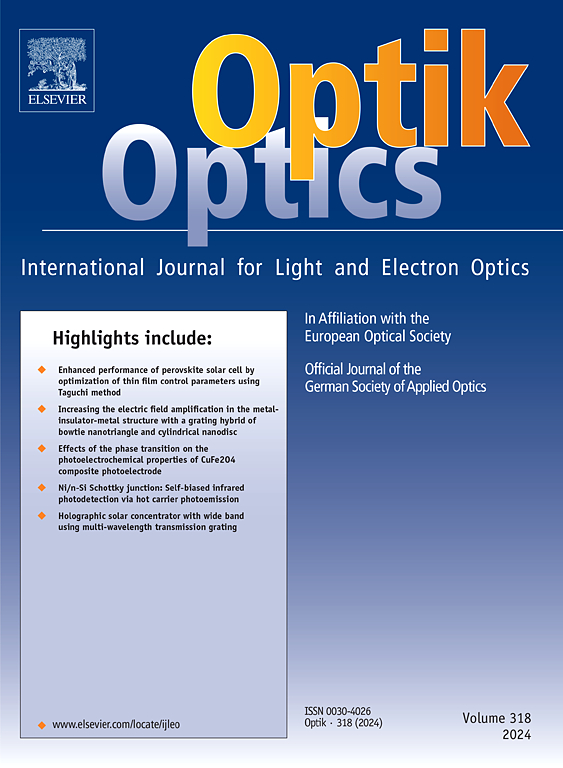抗溶剂滴注时间对硅/MAPbI3异质结光检测性能的影响
IF 3.1
3区 物理与天体物理
Q2 Engineering
引用次数: 0
摘要
在这项工作中,我们在环境条件下使用抗溶剂处理方法开发了基于硅/CH3NH3PbI3 (MAPbI3)异质结的光电探测器。为了在钙钛矿薄膜中获得最佳的形态和覆盖度,我们通过跟踪钙钛矿前驱体溶液在衬底上自旋涂覆时的浑浊点来研究抗溶剂滴下时间。通过在达到浊度点之前的加工窗口中引入抗溶剂,我们成功地获得了致密的MAPbI3膜,其表面覆盖率提高,在300-550 nm波长范围内吸收提高。硅/MAPbI3异质结光电探测器的性能也受到相对于浊点的抗溶剂滴注次数的影响。当在浊点前一秒应用抗溶剂处理时,冠军装置的暗电流被抑制约十个数量级。最佳器件的响应率为30 mA/W,比探测率超过10 ¹ ⁰Jones,在-9V下,在25 mW/cm²的光照下,530 nm。本文章由计算机程序翻译,如有差异,请以英文原文为准。
Effect of antisolvent dripping time on the photodetection performance of silicon/MAPbI3 heterojunction
In this work, we developed a silicon/CH3NH3PbI3 (MAPbI3) heterojunction-based photodetector under ambient conditions using the antisolvent treatment method. To achieve the best morphology and coverage in the perovskite thin film, we investigated the antisolvent dripping time by tracking the turbid point during the spin coating of the perovskite precursor solution on the substrate. By introducing the antisolvent in the processing window just before reaching the turbid point, we successfully obtained a dense MAPbI3 film with improved surface coverage, exhibiting elevated absorption within the wavelength range of 300–550 nm. The performance of silicon/MAPbI3 heterojunction-based photodetectors is also influenced by the antisolvent dripping times relative to the turbid point. The dark current of the champion device is suppressed by about ten orders of magnitude when the antisolvent treatment is applied a second before the turbid point. The optimal device demonstrates a responsivity of 30 mA/W and a specific detectivity exceeding 10 ¹ ⁰ Jones at -9V under 25 mW/cm² light illumination at 530 nm.
求助全文
通过发布文献求助,成功后即可免费获取论文全文。
去求助
来源期刊

Optik
物理-光学
CiteScore
6.90
自引率
12.90%
发文量
1471
审稿时长
46 days
期刊介绍:
Optik publishes articles on all subjects related to light and electron optics and offers a survey on the state of research and technical development within the following fields:
Optics:
-Optics design, geometrical and beam optics, wave optics-
Optical and micro-optical components, diffractive optics, devices and systems-
Photoelectric and optoelectronic devices-
Optical properties of materials, nonlinear optics, wave propagation and transmission in homogeneous and inhomogeneous materials-
Information optics, image formation and processing, holographic techniques, microscopes and spectrometer techniques, and image analysis-
Optical testing and measuring techniques-
Optical communication and computing-
Physiological optics-
As well as other related topics.
 求助内容:
求助内容: 应助结果提醒方式:
应助结果提醒方式:


